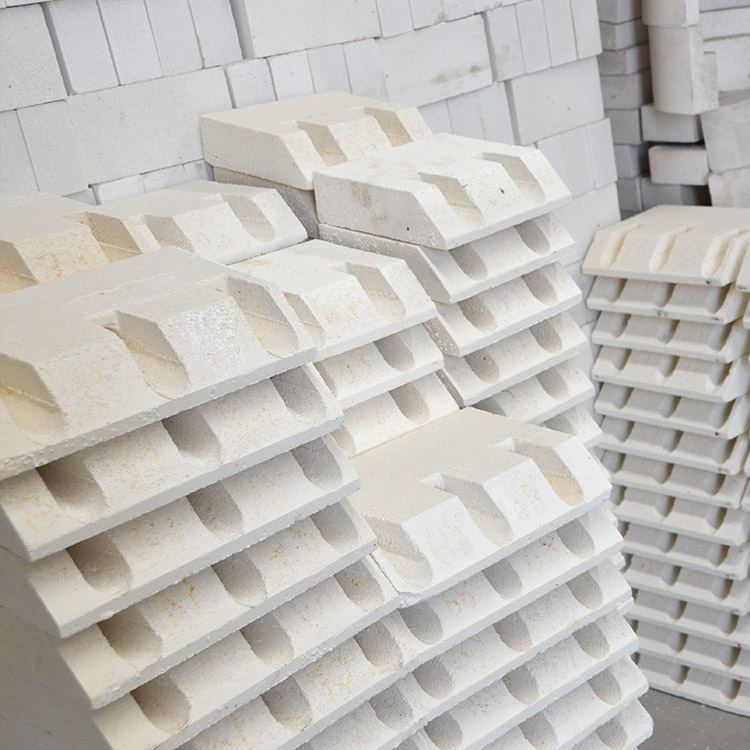
In high-temperature industrial environments such as glass furnaces and blast furnace linings, operational efficiency often declines due to refractory material degradation caused by chemical corrosion and thermal shocks. This challenge prompts manufacturers to select refractory bricks that not only withstand extreme temperatures but also maintain structural integrity over time. Mullite bricks, composed chiefly of high-purity Al2O3 and SiO2 phases, have emerged as a leading material due to their excellent refractoriness and thermal stability. This article delves into the core technical characteristics of mullite bricks and explores their practical impact on enhancing industrial production efficiency.
Industrial furnaces and kilns routinely face severe chemical environments that aggressively attack lining materials. For example, refractory linings in glass melting tanks are exposed to hot molten glass and volatile alkalis, while blast furnace interiors contend with slags and gases at temperatures exceeding 1500°C. These corrosive conditions induce surface wear, cracking, and eventual material spalling, resulting in heat loss, increased energy consumption, and unscheduled downtime. Studies show that roughly 20-30% of production inefficiencies in high-temperature processing stem directly from refractory failure.
Mullite bricks are produced through a carefully controlled firing process that induces the formation of a stable mullite (3Al2O3 · 2SiO2) crystalline phase within a silica-alumina matrix. Raw materials commonly include kaolin clay and bauxite, combined with additives to optimize properties. The firing temperature typically reaches 1450°C to 1550°C, resulting in bricks exhibiting a density range of 2.6 to 2.8 g/cm³ and a porosity between 12% and 18%. This tight microstructure underpins their resistance to slag penetration and mechanical erosion typical in high-temperature applications.
| Technical Parameter | Typical Range / Value | Industrial Benefit |
|---|---|---|
| Refractoriness (°C) | ≥ 1780 | Maintains shape and strength at ultra-high temperatures, avoiding deformation |
| Thermal Shock Resistance (Cycles) | ≥ 30 (water quenching method) | Resists cracking under rapid temperature changes |
| Corrosion Resistance (Weight loss mg/cm²) | < 4 after 100 hrs in molten slag | Prolongs lining life in chemically aggressive environments |
| Abrasion Resistance (mm³) | < 800 after ASTM C704 test | Minimizes wear from mechanical impacts and erosive particles |
In glass furnace applications, mullite bricks exhibit exceptional stability, effectively resisting corrosion from molten glass and volatile alkalis such as Na2O and K2O. A leading European glass manufacturer reported that switching to high-density mullite bricks reduced furnace downtime by 25% and extended lining service life from 18 to 28 months, directly translating to over 1 million euros in operational savings annually.
Similarly, in blast furnace inner linings, the excellent thermal shock resistance of mullite bricks allows for stable operation during frequent temperature cycling inherent in furnace tapping and charging processes. One Chinese steel producer noted a 30% reduction in refractory replacement frequency after adopting mullite bricks, improving overall production continuity and reducing maintenance costs.

A prominent glass manufacturing plant in Southeast Asia, facing accelerated refractory wear due to a harsh hot alkali atmosphere, experienced frequent unscheduled furnace shutdowns averaging 12 per year. By integrating a proprietary high-purity mullite brick formulation into their critical furnace sections, their refractory replacement interval extended to 30 months. Post-implementation data highlighted a 40% reduction in energy consumption attributed to improved lining insulation and fewer thermal leakages. This translated to a measurable increase in glass output quality consistency and reduced reject rates by 15%.
For industries reliant on high-temperature processing, selecting refractory materials with superior thermal stability, corrosion, and abrasion resistance is paramount to maintaining operational efficiency and cost-effectiveness. Mullite bricks combine these critical attributes into a robust solution that withstands aggressive industrial environments, delivering proven benefits in furnace longevity, energy savings, and product quality. Understanding the material’s technical parameters and application profiles enables procurement specialists and engineering teams to make informed decisions aligned with process demands.
Interested in optimizing your high-temperature industrial equipment with advanced mullite bricks? Discover our tailored refractory solutions and case studies here.


